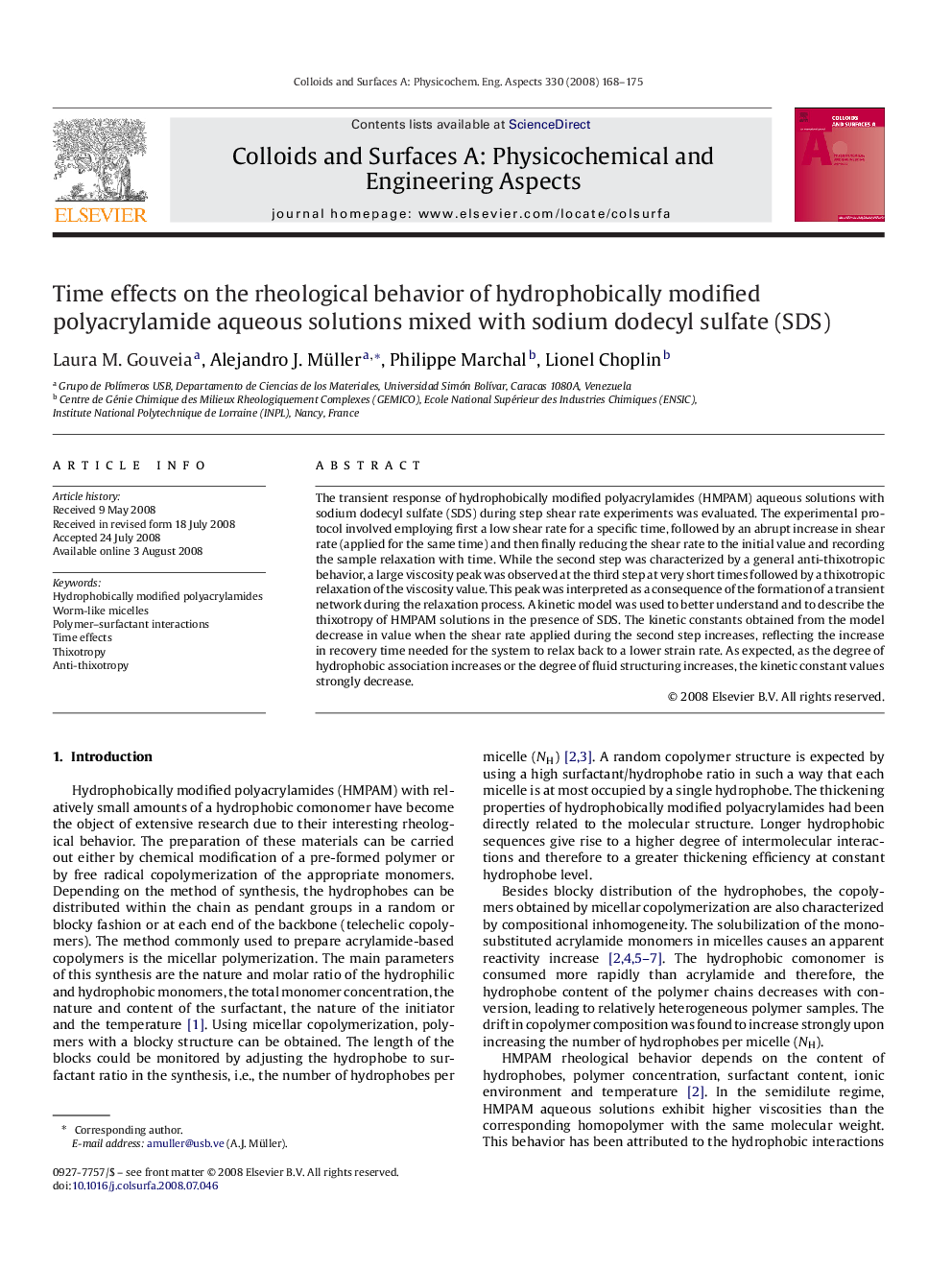| Article ID | Journal | Published Year | Pages | File Type |
|---|---|---|---|---|
| 596435 | Colloids and Surfaces A: Physicochemical and Engineering Aspects | 2008 | 8 Pages |
The transient response of hydrophobically modified polyacrylamides (HMPAM) aqueous solutions with sodium dodecyl sulfate (SDS) during step shear rate experiments was evaluated. The experimental protocol involved employing first a low shear rate for a specific time, followed by an abrupt increase in shear rate (applied for the same time) and then finally reducing the shear rate to the initial value and recording the sample relaxation with time. While the second step was characterized by a general anti-thixotropic behavior, a large viscosity peak was observed at the third step at very short times followed by a thixotropic relaxation of the viscosity value. This peak was interpreted as a consequence of the formation of a transient network during the relaxation process. A kinetic model was used to better understand and to describe the thixotropy of HMPAM solutions in the presence of SDS. The kinetic constants obtained from the model decrease in value when the shear rate applied during the second step increases, reflecting the increase in recovery time needed for the system to relax back to a lower strain rate. As expected, as the degree of hydrophobic association increases or the degree of fluid structuring increases, the kinetic constant values strongly decrease.
